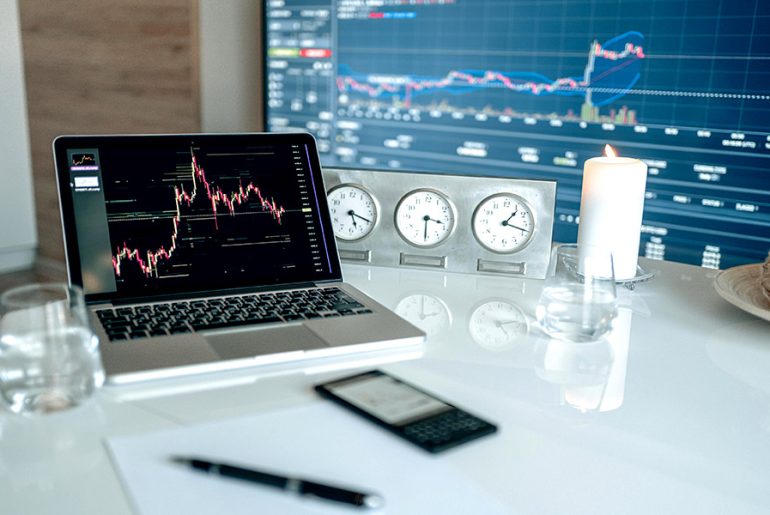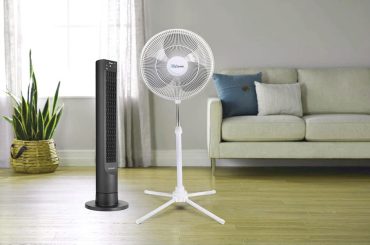Finding the best laptop for trading crypto on a budget presents a unique challenge for both beginners and experienced traders. While professional traders often invest thousands in high-end machines, beginners and casual traders can still find capable devices within a $500 budget. The key lies in understanding which specifications matter most and making smart compromises without sacrificing essential functionality when choosing the best laptop for trading crypto.
Essential Requirements for the Best Laptop for Trading Crypto
Processing Power and Memory
Your laptop’s CPU speed directly affects how efficiently trading platforms operate. Entry-level chips like Intel i3 or AMD Ryzen 3 deliver sufficient power for fundamental cryptocurrency trading tasks. These chips handle multiple browser tabs, trading platforms, and market analysis tools simultaneously without significant lag.
Memory requirements vary based on trading intensity. Eight gigabytes of RAM serves as the absolute minimum for crypto trading, allowing users to run trading platforms like Binance, Coinbase Pro, or KuCoin alongside web browsers and communication apps. While 16GB offers better performance, finding it under $500 requires careful shopping or considering refurbished options.
Display and Graphics Considerations
Screen quality directly impacts trading effectiveness. A 15.6-inch display provides enough space to monitor price charts, order books, and portfolio data without excessive scrolling. Full HD resolution (1920×1080) ensures crisp text and clear chart details, reducing eye strain during extended trading sessions.
Integrated graphics handle trading applications perfectly well. Dedicated graphics cards add unnecessary cost for pure trading purposes, though they become valuable if users plan to mine cryptocurrency or run complex technical analysis software.
Best Laptop for Crypto Trading: Top Budget Recommendations
ASUS VivoBook 16 M1605
The ASUS VivoBook 16 stands out as an exceptional value proposition. Its AMD Ryzen 5 processor delivers solid performance for multitasking, while the larger 16-inch screen provides extra real estate for monitoring multiple trading pairs simultaneously. The laptop includes 8GB RAM and a 256GB SSD, offering responsive performance and adequate storage for trading applications.
| Specification | Details |
| Processor | AMD Ryzen 5 |
| RAM | 8GB |
| Storage | 256GB SSD |
| Display | 16-inch Full HD |
| Battery Life | Up to 9 hours |
| Price Range | $450-$500 |
Battery life extends up to 9 hours during light usage, making it suitable for traders who prefer working from cafes or co-working spaces. Its complete keyboard layout features dedicated number keys that make trade orders and price calculations faster.
Acer Aspire 5
Acer’s Aspire 5 series consistently delivers reliable performance at budget-friendly prices. Current versions come equipped with Intel Core i3 chips alongside 8GB memory and solid-state drives offering 256GB capacity. Its 15.6-inch screen delivers sharp images perfect for studying trading charts and tracking market prices.
| Specification | Details |
| Processor | Intel Core i3 |
| RAM | 8GB |
| Storage | 256GB SSD |
| Display | 15.6-inch Full HD |
| Connectivity | Wi-Fi 6, Multiple USB ports |
| Price Range | $400-$480 |
Build quality exceeds expectations for the price range, with a sturdy chassis that withstands regular transport. Multiple USB ports, HDMI output, and Wi-Fi 6 connectivity ensure compatibility with external monitors and stable internet connections.
HP Pavilion 15
HP’s Pavilion 15 offers balanced performance with AMD Ryzen processors and integrated Radeon graphics. The laptop handles basic trading tasks efficiently while maintaining good thermal management during extended use. Its webcam and microphone setup works well for video calls with trading groups or educational webinars.
| Specification | Details |
| Processor | AMD Ryzen 3/5 |
| RAM | 8GB |
| Graphics | Integrated Radeon |
| Display | 15.6-inch Full HD |
| Security | Fingerprint reader |
| Price Range | $420-$490 |
The backlit keyboard helps during late-night trading sessions, while the fingerprint reader adds security for protecting trading accounts and cryptocurrency wallets.
Lenovo IdeaPad 3
Lenovo’s IdeaPad 3 provides reliable performance with either Intel or AMD processor options. The laptop’s cooling system prevents thermal throttling during intensive market analysis, maintaining consistent performance when running multiple applications.
| Specification | Details |
| Processor | Intel i3 or AMD Ryzen 3 |
| RAM | 8GB |
| Storage | 256GB SSD or 1TB HDD |
| Display | 15.6-inch Full HD |
| Cooling | Advanced thermal management |
| Price Range | $380-$470 |
You can choose between conventional mechanical drives or faster solid-state storage solutions. Opting for solid-state drives drastically reduces startup delays and program launch times, crucial for capturing fast-moving market opportunities.
Performance Optimization for Your Best Laptop for Trading Crypto
Minimum vs Recommended Specifications
Knowing what specs you absolutely need versus what would be ideal allows for smarter purchasing choices:
| Component | Minimum | Recommended | Impact on Trading |
| RAM | 8GB | 16GB | Smoother multitasking |
| Processor | Intel i3/AMD Ryzen 3 | Intel i5/AMD Ryzen 5 | Faster data processing |
| Storage | 256GB SSD | 512GB SSD | More trading apps |
| Display | 15.6″ Full HD | 17″ Full HD | Better chart visibility |
| Battery Life | 6 hours | 8+ hours | Extended trading sessions |
Software Management
Running lightweight trading applications improves overall system responsiveness. Web-based platforms often consume fewer resources than desktop applications, though they require stable internet connections. Closing unnecessary background applications frees up memory for trading software.
Browser optimization makes a significant difference. Browser add-ons for Chrome and Firefox boost trading capabilities, though installing excessive plugins reduces system speed. Ad blockers reduce bandwidth usage and eliminate distracting advertisements on financial news sites.
Storage and Memory Upgrades
Many budget laptops allow memory and storage upgrades after purchase. Adding a second RAM stick often costs less than buying a pre-configured higher-memory model. Similarly, replacing traditional hard drives with SSDs dramatically improves system responsiveness.
Cloud storage services reduce local storage requirements while providing backup protection for important trading data and documents.
Security Considerations for Budget Trading Setups
Hardware Security Features
Biometric authentication adds protection without significant cost. Biometric scanners block unwanted users from accessing your crypto accounts and digital wallets. Though they aren’t perfect, these sensors offer stronger protection compared to relying solely on passwords.
TPM (Trusted Platform Module) chips enable hardware-level encryption for sensitive data. Most modern laptops include TPM 2.0, supporting Windows Hello and other advanced security features.
Software Security Measures
Two-factor authentication remains crucial regardless of hardware budget. Physical security tokens deliver stronger safeguarding than text message verification methods. Budget considerations shouldn’t compromise account security when substantial cryptocurrency holdings are involved.
Regular software updates patch security vulnerabilities that could expose trading accounts to attacks. Automated update schedules ensure critical security patches install promptly.
Connectivity and Portability Features
Network Performance
Reliable network connections matter more for profitable trading than having the fastest CPU specs. The latest Wi-Fi 6 technology delivers enhanced speed and stability when working in busy locations such as cafes or shared workspaces.
Ethernet ports enable wired connections for maximum stability during important trading decisions. While many modern laptops omit ethernet ports, USB adapters provide alternatives when needed.
Battery Life and Portability
Extended battery life supports mobile trading strategies. Laptops achieving 8-10 hours of mixed usage allow full trading days without power outlets. Fast charging capabilities minimize downtime when batteries drain during active trading sessions.
Weight considerations matter for traders who move frequently between locations. Laptops under 4 pounds provide good portability without sacrificing screen size or performance.
Conclusion
Budget-conscious crypto traders can find the best laptop for trading crypto under $500 that handles basic to intermediate trading needs effectively. The ASUS VivoBook 16, Acer Aspire 5, HP Pavilion 15, and Lenovo IdeaPad 3 stand out as excellent choices that combine solid performance with useful features at reasonable prices.
Success depends on understanding personal trading requirements and making informed compromises. While these budget laptops won’t match professional trading workstations, they provide solid foundations for learning cryptocurrency markets and developing trading skills. Smart optimization, security practices, and potential future upgrades can extend their usefulness as trading activities grow more sophisticated.
Remember that finding the best laptop for trading crypto represents just one component of a successful trading setup. Reliable internet, proper security measures, and continuous education remain equally important investments for long-term trading success.





